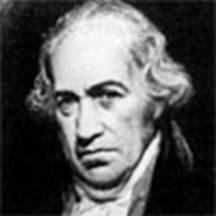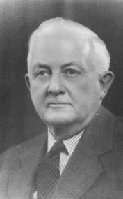A vacuum flask (also known as a Dewar flask, Dewar bottle or thermos) is an insulating storage vessel that greatly lengthens the time over which its contents remain hotter or cooler than the flask's surroundings. Invented by Sir James Dewar in 1892, the vacuum flask consists of two flasks, placed one within the other and joined at the neck. The gap between the two flasks is partially evacuated of air, creating a near-vacuum which significantly reduces heat transfer by conduction or convection. When used to hold cold liquids, this also virtually eliminates condensation on the outside of the flask.
Vacuum flasks are used domestically to keep beverages hot or cold for extended periods of time, and for keeping cooked food hot. They are also used for thermal cooking. Vacuum flasks are also used for many purposes in industry.
History
The vacuum flask was designed and invented by Scottish scientist Sir James Dewar in 1892 as a result of his research in the field of cryogenics and is sometimes called a Dewar flask in his honour. While performing experiments in determining the specific heat of the element palladium, Dewar made a brass chamber that he enclosed in another chamber to keep the palladium at its desired temperature. He evacuated the air between the two chambers, creating a partial vacuum to keep the temperature of the contents stable. Dewar refused to patent his invention, and the flask, as developed by others using new materials such as glass and aluminium, became a significant tool for chemical experiments and also a common household item.
Dewar's design was quickly transformed into a commercial item in 1904 as two German glassblowers, Reinhold Burger and Albert Aschenbrenner, discovered that it could be used to keep cold drinks cold and warm drinks warm and invented a more robust flask design, which was suited for everyday use. The Dewar flask design had never been patented but the German men who discovered the commercial use for the product named it Thermos, and subsequently claimed both the rights to the commercial product and the trademark to the name. In his subsequent attempt to claim the rights to the invention, Dewar instead lost a court case to the company. The manufacturing and performance of the Thermos bottle was significantly improved and refined by the Viennese inventor and merchant Gustav Robert Paalen, who designed various types for domestic use, which he also patented, and distributed widely, through the Thermos Bottle Companies in the United States, Canada and the UK, which bought licences for respective national markets. The American Thermos Bottle Company built up a mass production in Norwich, CT, which brought prices down and enabled the wide distribution of the product for at-home use. Over time, the company expanded the size, shapes and materials of these consumer products, primarily used for carrying coffee on the go and carrying liquids on camping trips to keep them either hot or cold. Eventually other manufacturers produced similar products for consumer use.
The term "thermos" became a household name for vacuum flasks in general. As of 2023, Thermos and THERMOS remains a registered trademark in some countries, including the United States, but the lowercase "thermos" was declared a genericized trademark by court action in the United States in 1963.
If you want to read more, go here: https://en.wikipedia.org/wiki/Vacuum_flask#Design
- 1/2 cup packed light brown sugar, divided
- 3 tablespoons butter, melted, divided
- 1 tablespoon light corn syrup
- 3/4 cup chopped pecans, divided
- 1 (8-ounce) package refrigerated crescent roll dough
- 1 teaspoon ground cinnamon
- Preheat oven to 375º. Coat an 8-inch square baking dish with cooking spray.
- In a small bowl, combine 1/4 cup brown sugar, 2 tablespoons melted butter, and the corn syrup; mix until smooth, then spread over bottom of baking dish. Sprinkle with 1/2 cup pecans.
- Unroll crescent dough and press seams together to form one large rectangle. Brush with remaining 1 tablespoon melted butter. Sprinkle with remaining 1/4 cup brown sugar, the cinnamon, and the remaining 1/4 cup pecans.
- Starting at the wide end, roll up jelly roll-style. With a sharp knife, cut into 9 equal slices and place each slice cut-side down in baking dish.
- Bake 18 to 20 minutes, or until the dough is puffed and golden. Remove from oven and carefully invert onto serving platter immediately. Allow to cool slightly and serve warm.

















No comments:
Post a Comment